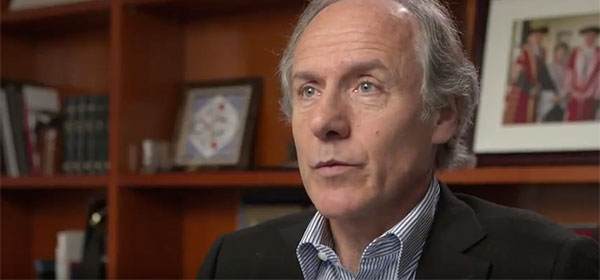A major review of Australia’s energy sector by chief scientist Dr Alan Finkel has been underway for some time, with the final report due for release today.
It is believed that Dr Alan Finkel, the scientist heading up the investigation alongside four energy experts, will recommend a new clean energy target that will bring Australia a step closer to adopting renewable energy as a viable resource and hopefully end the divide on climate policy.
Along with his primary recommendation of adopting a new clean energy target, Dr Finkel wants to promote increased use of gas and focus on energy storage systems.
Currently, electricity production is our biggest source of pollution. Around 87 per cent of Australia’s electricity is produced using fossil fuels. Brown and black coal make up 77 per cent, 10 per cent comes from gas and the remaining 13 per cent is derived from renewables.
Our reliance on fossil fuels needs to fall if we are to avoid catastrophic climate change.
So, what’s the plan?
Dr Alan Finkel’s plan for the future of the National Electricity Market involves setting a clean energy target that is enforced by ‘carrot and stick’ incentives for energy providers.
In other words, rules that encourage energy sellers to adhere to low-emissions targets or to sell power derived from low emissions technology, such as gas or renewables.
Dr Finkel’s plan doesn’t rule out coal either, it just needs to be coupled with carbon capture which, at the moment, is expensive and may not come into effect in the near future. Any cost associated with carbon capture will likely to be passed onto consumers.
The report recommends setting a benchmark of 700kg of carbon dioxide (CO2) per megawatt hour of electricity. So, if a generator produces less than 700kg of CO2 per unit, it will receive a credit which can be sold on to energy retailers.
The benchmark is low and will effectively punish coal-based power plants, as credits will go to the most environmentally friendly power stations, such as those that use efficient gas turbines, which emit around 400kg per megawatt and renewables which produce no carbon.
This means energy retailers will be provided with an incentive to purchase clean energy for resale to consumers, thus forcing polluting coal plants out of the market.
Assuming, of course, that the Government accepts the recommendation.
Another recommendation is an emissions intensity scheme (EIS), which would target power stations by setting limits on the volume of greenhouse gases they emit. If the power stations go over the limit, they then have to buy credits from stations with lower emissions. In other words, generators that use coal will have to pay to support renewable generators.
This recommendation seems to be the one favoured by government bodies and organisations such as the Climate Change Authority and Australian Energy Market Commission.
In fact, even most electricity providers support this idea. All that is required is for everyone to agree on a strict low emissions target. Hopefully, Dr Finkel has given us that target – or at least a benchmark to encourage compromise.
But how much will this cost you?
Basically, your electricity bill consists of three charges: wholesale and retail prices (based on supply and demand), infrastructure costs (poles and wires) and environmental policies. Infrastructure makes up the biggest cost in your bill with environmental policies being the smallest component.
Effectively, Australians are charged twice for power: the first time when the retailer buys it from the wholesaler and the second when it’s resold by the retailer. So if the cost of power being bought from the wholesaler is lower, in theory, that reduced cost would be passed on to you. But energy retailers can charge whatever they like.
The Government has recently asked the Australian Competition and Consumer Commission (ACCC) to investigate high power prices, so if anyone can reduce our power bills, it’s the ACCC.
Read more at www.abc.net.au
What do you think of Dr Finkel’s idea? Would you be prepared to pay a little more for clean energy? Or do you think that the cost of clean energy should be borne by the providers?
Related articles:
Electricity bills explained
Cut electricity and water costs
How to use less electricity

